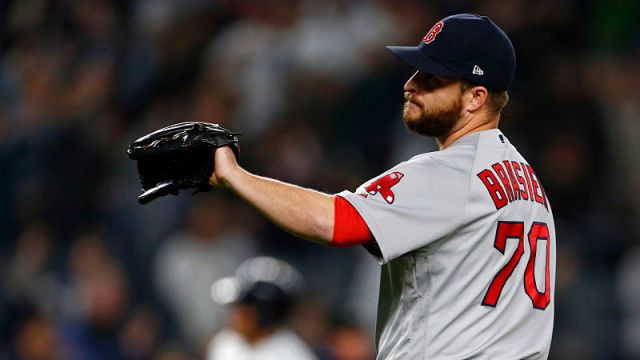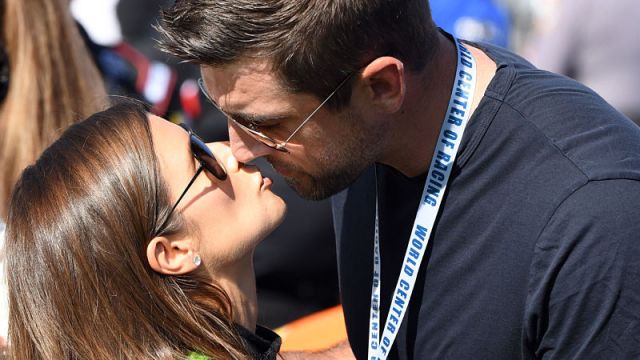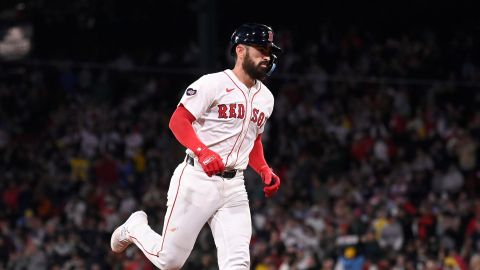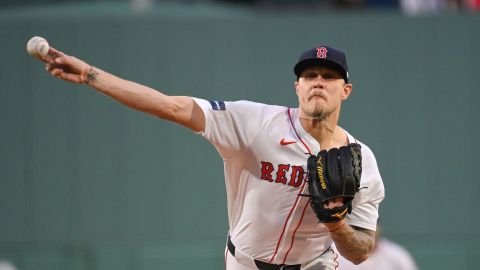Andrew Cashner won’t be the Boston Red Sox’s savior, but they’re not bringing in the big right-hander to fill that role anyway.
Boston acquired the veteran pitcher over the weekend, parting with a pair of young, low-level minor leaguers to get him. Cashner will make his first start for the Red Sox on Tuesday when he takes the hill at Fenway Park in the home whites for the first time against the Toronto Blue Jays.
Cashner shouldn’t be viewed as the piece that instantly puts the Red Sox back in the World Series picture. The struggling Sox have a lot of issues they must solve in order to even have dreams of repeating, like getting Chris Sale back in working order. If that doesn’t happen, Cashner will almost certainly be an afterthought in a lost season.
But that’s not to say he won’t help. The fifth spot in the Red Sox rotation has been a black hole this year, and Cashner — a 10-year major league veteran — should stop the bleeding at the back end of the rotation. Any sort of stabilization from that spot will be a welcomed improvement.
Here are some thoughts about the type of pitcher Cashner is and what he might bring to the Red Sox.
— Cashner’s 2019 stats: 9-3, 3.83 ERA, 6.17 strikeouts per nine innings, 2.71 walks per nine innings
— His repertoire is fairly straightforward. Cashner throws a four-seam fastball that he can run up as high as 96 or 97 mph, but he’ll typically live in the mid-90s. He also features a knuckle-curveball that he’s throwing about 12 percent of the time this season while also mixing in a slider.
The biggest change this season for Cashner, however, has been an increase in his changeup. Cashner has thrown the off-speed pitch more than 25 percent of the time, and it’s obviously working quite well. The increase in volume and quality of the changeup has made Cashner very tough on left-handed batters, who are hitting just .182 against him this season. Only four right-handed pitchers have a lower batting average against vs. left-handed hitters this season.
— Don’t get fooled by win-loss records. Last season, Cashner went 4-15 for a historically bad Orioles team. This season, he’s 9-3 for an even more historically bad Orioles team. So, obviously, he must be pitching much better this season, right? Technically, yes, but that’s only half the story.
In 28 starts last season, Baltimore gave Cashner an average of 3.43 runs of support per start. Only four pitchers in all of baseball who made at least 20 starts had worse run support. This season, however, he’s getting 6.35 runs of support per start, which is fourth-best in all of baseball.
— Cashner’s ERA is 3.83, but his FIP (fielding independent pitching) is 4.26. That the ERA is lower than the FIP typically suggests he’s been a little lucky this season. That might be true, but Cashner has also done a good job of inducing weaker contact this season. His line-drive percentage currently sits at 16.5 percent, nearly 4 percentage points lower than his career average and a big improvement from his 23.4 percent rate in 2018. Without going back and watching every one of his starts, one has to wonder if the improved changeup is a big reason for the improvement.
— Baltimore moved Cashner when his stock was as high as it could get this season. The O’s won four of his last five starts, with the 32-year-old posting a 1.41 ERA in those outings, holding opposing hitters to a .168 batting average.
— He was awesome in his last start against Toronto on July 6. Cashner needed just 88 pitches (61 strikes) to get through seven innings. One thing that really stood out was his aggressive pitching style. He was unafraid to go in on right-handed hitters, working to establish the fastball on the inner half. A great example of this came in the first inning when he sawed off Vladimir Guerrero Jr. with a 94 mph fastball off the inner half that broke Guerrero’s bat and led to a weak groundout to shortstop. We’ll have to see if pitching at Fenway changes that approach at all.
— Cashner will give the Red Sox innings. He’s logged at least five innings in all but two of his 17 starts this season. For what it’s worth: Sale has failed to log five innings in three of his 19 starts this season.
— Cashner works pretty fast. Among 79 qualified pitchers, the right-hander’s pace (23.5 seconds per pitch) is the 34th-fastest.






